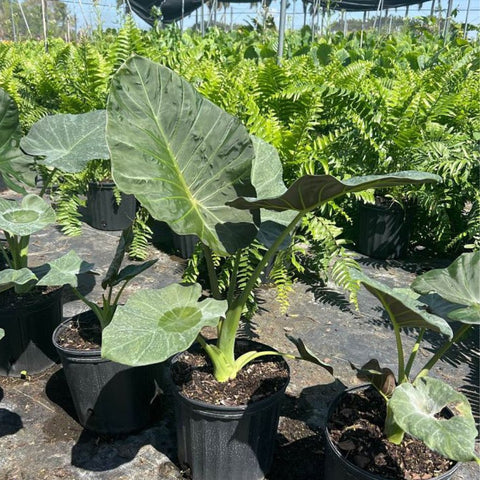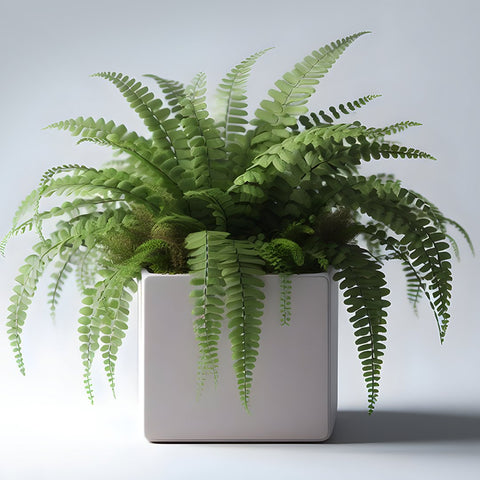Introduction
Welcome to the Rebirth of Your Garden
Spring is a magical time when gardens burst back to life, leaving behind the serenity of winter to embrace an explosion of color, fragrances, and new growth. At Plantology, we understand the transformative power of this season, which is why we're here to provide you with a comprehensive guide filled with inspiration and tips to craft your perfect spring garden.

Why Early Planning Sets the Stage
A well-thought-out plan is crucial for achieving the lush, bountiful garden of your dreams. Early spring allows you to strategize, choose plants that thrive during this season, and implement a gardening timeline that ensures continuous beauty. With the right approach, your garden not only looks fabulous but also becomes a sustainable ecosystem that provides joy all year round.
Embracing the Beauty of Spring
Ecology and Aesthetics: A Harmonious Balance
Spring offers an ideal time to create a garden that is both ecologically sustainable and wondrously beautiful. Embracing native plants and fostering biodiversity can enhance the aesthetic appeal of your garden while supporting local wildlife and reducing maintenance needs.
Cultivating Native Plants
Why Native Matters
Native plants are adapted to the local climate and soil, making them easier to grow and more resistant to pests and diseases. They require less water and fewer fertilizers, making them an eco-friendly choice for gardening enthusiasts.
Top Native Plant Picks
- Agapanthus 'Lily of the Nile': This stunning perennial produces clusters of blue flowers that add a splash of color to your garden and attract pollinators.
-
Agave Blue: Known for their striking, spiky foliage, agaves are low maintenance and drought-tolerant, perfect for adding architectural interest.

Designing Your Spring Garden
Creating a Garden Theme
Your garden is an extension of your personal style. Designing with a theme in mind not only enhances visual appeal but also ensures cohesion in plant selection and garden layout.
Popular Garden Themes
Wildlife-Friendly Gardens
Encourage biodiversity by incorporating plants that provide food and habitat for wildlife. Consider adding bird feeders, bee hotels, and water features to attract a thriving array of birds, bees, and butterflies.
Tropical Escapes
Transform your space into a lush paradise with Adonidia Palms and Agave Caribbean. These plants offer exotic flair and are perfect for creating a tranquil, holiday-like atmosphere.
Modern Minimalist
A minimalist garden focuses on creating harmony through a limited palette of shapes and colors. Opt for simple, elegant plants such as Aglaonema Silver Bay that offer striking foliage without overwhelming the senses.
Incorporating Hardscaping Elements
Hardscaping refers to the non-plant elements of your garden, such as patios, paths, and planters. Properly integrated, they enhance functionality and add aesthetic value to your garden space.

Essential Spring Plant Care Tips
Soil Preparation and Conditioning
Understanding Your Soil
Begin by testing your soil to understand its pH levels, nutrient makeup, and composition. This information will guide your choices in soil amendments to create the best environment for plant growth.
Improving Soil Health
Incorporate organic matter such as compost or well-rotted manure to improve soil texture and fertility. This helps in maintaining moisture levels and fostering beneficial microbial activity in the soil.
Watering Wisely
Smart Irrigation Techniques
Effective watering is critical to healthy plant growth. Drip irrigation and soaker hoses minimize water waste by delivering moisture directly to the plant roots. Early morning watering can reduce evaporation and fungal diseases.
Selecting the Right Plants for Spring
Understanding Climate Zones
Choose plants that are suited to your climate zone to ensure they thrive. Familiarize yourself with the USDA Plant Hardiness Zone Map to make informed decisions about plant purchases.

Best Picks for a Blossoming Spring Garden
- Agave desmettiana Variegata: Its rosette form and variegated foliage create a stunning focal point.
- Alexander Palm: Perfect for adding vertical interest and tropical vibes to garden corners.
Personalizing Your Spring Garden
Garden Accessories and Decor
Accent your garden with personalized touches that reflect your style. Consider wind chimes, decorative stones, or unique garden sculptures that bring character and charm to your outdoor haven.
Outdoor Furniture: Comfort Meets Style
Your garden is a sanctuary, and the right furniture can transform it into a relaxing retreat. Choose weather-resistant materials that complement your garden's theme and provide comfort without compromising on aesthetics.
Maintaining Your Spring Garden's Beauty
Regular Maintenance and Monitoring
Pest and Disease Management
Catch potential problems early by regularly inspecting plants for signs of stress, disease, or pests. Integrated Pest Management (IPM) techniques, such as introducing natural predators or using neem oil, can effectively control infestations without harming the environment.

Pruning and Deadheading
Regular pruning maintains plant health and encourages flowering. Deadhead spent flowers to promote continuous blooming and a tidy appearance.
Seasonal Transitions: Preparing for What's Next
As spring transitions into summer, adjust your plant care routine to accommodate changing temperatures and daylight hours. Implement a mulching strategy to retain soil moisture and regulate temperature.
Final Thoughts on Spring Garden Inspiration
Crafting a spring garden is a rewarding journey that reflects your creativity, enhances your outdoor space, and provides a sanctuary from the hustle of daily life. With careful planning and a dash of inspiration, your garden can become a living canvas of colors, textures, and fragrances that delights your senses.
Explore our full range of plants and accessories at Plantology to take the next step in bringing your dream garden to life. Don't miss out on our featured Adonidia Palm selections to add a touch of the exotic to your landscape!
Expanding Your Gardening Expertise
Understanding Companion Planting
Companion planting is an ancient agricultural technique that involves growing two or more plant species together for mutual benefit. A successful companion planting strategy can lead to healthier plants, greater yields, and reduced pest problems. For example, growing Marigolds alongside vegetables like tomatoes can help deter nematodes, while Basil pairs well with peppers and can improve their growth and flavor.

Examples of Companion Plants
- Marigold and Tomato: Marigolds emit a strong odor that confuses and repels certain pests, benefiting the growth of tomatoes.
- Carrot and Chive: Chives can help improve the flavor of carrots and deter carrot flies.
- Zucchini and Nasturtium: Nasturtiums attract aphids away from the zucchini, sacrificing themselves for the good of the harvest.
The Science of Soil Amendments
Not all soils are created equal. Understanding the specific needs of your garden soil can help in selecting the right amendments to optimize plant growth. While compost is a universal amendment, other additives such as bone meal or peat moss can enhance particular soil characteristics.
Different Types of Soil Amendments
- Compost: A rich source of organic matter that improves soil structure and fertility.
- Bone Meal: High in phosphorus, ideal for encouraging healthy root and flower growth.
- Peat Moss: Lightens soil compositions and helps retain moisture, particularly beneficial in sandy soils.
Advanced Watering Systems
Maximize efficiency and sustainability in your garden by implementing advanced watering systems. While traditional watering cans and hoses can sometimes be inadequate, modern irrigation solutions such as drip systems and smart controllers help ensure that your garden gets the right amount of water with minimal waste.

Automated Watering Solutions
- Drip Irrigation Kit: Customizable and water-efficient, perfect for delivering precise hydration to plant roots.
- Smart Irrigation Controller: Internet-connected devices that adjust water schedules based on weather forecasts and soil moisture data.
Exploring Edible Gardens
Designing Your Own Kitchen Garden
The notion of 'farm-to-table' can be applied right in your backyard. Growing your own fruits, vegetables, and herbs not only gives you a fresh supply of ingredients but also connects you to the cycle of seasons and sustainable practices.
Must-Have Plants for a Kitchen Garden
- Cherry Tomatoes: Easy to grow and prolific producers, these cherry-sized delights can be grown in garden beds or containers.
- Sweet Basil: An essential herb for Italian and Asian cuisines, basil thrives in warm, sunny spots.
- Strawberries: A perennial favorite, sweet and juicy strawberries can be planted in gardens, pots, or hanging baskets.
Optimizing Container Gardens
Not everyone has access to expansive land, but that shouldn't be a limitation. Containers provide an excellent opportunity to grow everything from herbs to fruit trees on balconies, patios, or small urban spaces.

Container Gardening Tips
- Choose containers with good drainage holes to prevent waterlogging and root rot.
- Use a high-quality potting mix that is rich in organic matter and drains well.
- Pay attention to the light requirements of your chosen plants and arrange containers accordingly.
Enhancing Biodiversity in Your Garden
Attracting Pollinators
Pollinators play an invaluable role in the success of gardens, aiding in the reproduction of flowering plants. Creating a pollinator-friendly habitat can be achieved through the careful selection of plant species and the addition of key features.
Plants and Features to Invite Pollinators
- Echinacea: Known for its bright flowers, it attracts bees and butterflies.
- Asclepias (Milkweed): Essential for the lifecycle of monarch butterflies.
- Install bee hotels or small water sources like bird baths to provide for visiting pollinators.
Building Habitats for Beneficial Insects
While some insects can be seen as pests, many are beneficial, helping control the pest population and contributing to a healthy garden ecosystem. Encourage these helpful creatures by creating inviting habitats.

Ideas for Beneficial Insect Habitats
- Planting a variety of flowering plants to provide nectar and pollen.
- Allow some areas of the garden to remain undisturbed to serve as shelter for insects.
- Use straw or leaves to create mulch that can house insects like ladybugs and lacewings.
Innovative Garden Technologies
Embracing Smart Gardening Tools
The integration of technology into gardening practices has unlocked new possibilities for enhancing garden productivity and ease of maintenance. From apps that track plant care schedules to tools that help with precise watering, smart gardening tools offer a future-forward approach.
Tech Tools for the Modern Gardener
- Smart Plant Monitor: A sensor that tracks soil moisture, sunlight, and temperature for optimal plant care.
- Automated lawn mowers to ensure a perfectly manicured lawn with minimal effort.
- Apps that provide reminders and recommendations for plant watering and fertilizing schedules.
Vertical Gardening Solutions
As urban living continues to expand, so does the innovation in gardening techniques. Vertical gardening allows gardeners to maximize their planting area, using creative solutions like living walls or stacked planters to create greenery upwards rather than outwards.

Building Your Vertical Garden
- Select sturdy wall-mounted planters or using lattice to support climbers like ivy or tomatoes.
- Include a drip irrigation system to efficiently manage watering for vertically planted spaces.
- Choose plants with cascading habits or climbing tendencies, such as strawberries or beans, for dramatic and practical effects.
Getting Children Involved in Gardening
Benefits of Gardening for Children
Introducing children to gardening offers numerous psychological and physical benefits. Learning about the environment through hands-on activities can foster a lifelong appreciation for nature and sustainable living.
Kid-Friendly Gardening Projects
- Building a sensory garden with aromatic herbs and brightly colored flowers.
- Involving children in planting simple crops like radishes or cherry tomatoes, providing quick results and rewards.
- Creating wildlife-friendly spaces by making bird feeders or insect hotels with recycled materials.
Garden Spaces for Relaxation and Mindfulness
Cultivating a Zen Garden
Zen gardens are designed to promote tranquility and reflection, combining elements of landscape and space to create meditative environments. Embrace minimalism and carefully curated features to transform your garden into a peaceful retreat.

Key Elements of a Zen Garden
- Using gravel or sand raked into patterns to symbolize water and the flow of life.
- Incorporating rocks and stones for their aesthetic and symbolic properties.
- Adding features like a water fountain to provide serene soundscapes.
The Role of Aromatherapy in Gardens






























Comments (0)
There are no comments for this article. Be the first one to leave a message!